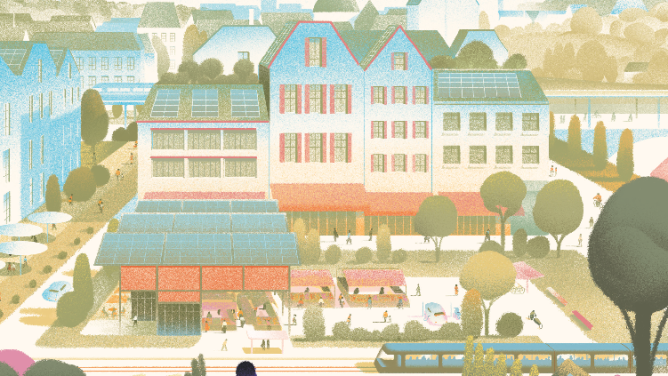A 2015 study by the Ellen MacArthur Foundation and the McKinsey Center for Business and the Environment states that the circular economy could potentially replace the linear model that currently dominates all sectors of the economy. A circular economic system could promote a 11% GDP growth by 2030 in Europe, compared to 4% with the current linear model. If the major economic actors fully embraced the circular economy, it could reduce CO2 emissions in Europe by 48% by 2030, and by 83% by 2050. The use of primary resources would be reduced by 32% by 2030, and by 53% by 2050. When the current commitments of the United States to save the climate are at best lukewarm, and supply chain issues are slowing down globalised industries, the path to follow seems clear. Not to mention that the “pillars” of the circular economy are widely known, at least theoretically.
Seven levers for action
In France, the Ademe lists seven levers, divided into three different areas. The first area is supply, where companies rely on eco-design methods and organise their production in partnership with other industries. In their sectors of activity, they would develop an industrial and territorial ecology, or transform their business models with functional economy, relying on repeated sale of services, rather than on one-off product sales.
In terms of demand and customer patterns, the circular economy must rely on extending the duration of use (which involves reuse and repair) and responsible consumption, through collaborative consumption and responsible purchasing. Finally, in the field of waste management, recycling must be priority.
What is the situation, in practice? In April 2021, the National Institute for the Circular Economy (INEC) and Opeo-Conseil consultancy conducted a survey of 18 French leading companies committed to a circular economy approach, as well as over sixty industrial companies across the country.
The models still leave a lot to be desired
The first finding of the survey is that most of what manufacturers do focuses on waste management and energy savings. “The proportion of waste managed in a circular manner is close to 60%. But actions for economic models, products and industrial models in terms of the market share of eco-designed products or product circularity, are low,” say the authors. They also note that the creation of new business models, adapted to the circular economy, is based on two principles: “increasing material use cycles and reducing residual negative externalities.” This requires the creation of “circularity loops at every stage of the product life cycle”. To put it plainly, companies are not implementing a full transition to the circular economy, but are gradually using organisational and business models that are moving towards it. The survey shows that “38% [of companies surveyed] have implemented over 3 models consecutively. […] SMEs tend to specialise in product repair and reuse models, while large companies focus on material reuse models. The least used circular economic model is the economy of functionality, at under 19%. It is also the most complex, in terms of product development and customer acceptability; 39% of companies have developed models involving the sourcing and purchase of recycled materials; 35% have developed business models around product life cycle and associated services; […] and 28% around the sale of second-hand or remanufactured products.“
The indicators are yet to be invented
In the construction sector, an ongoing study on the use of specific circular economy indicators by the “Circular Economy and Urban Metabolism” Chair at Gustave Eiffel University provides some insight. “Our initial results show that end-of-chain indicators, especially recycling indicators, are used the most, but that “upstream” indicators are still rare,” says research engineer Emmanuelle Moesch. By upstream indicators, I mean indicators that relate specifically to eco-design. They could provide information on in-house eco-design training, material dismantling or building versatility, that adapt to changes in capacity and functions. In the construction and development sector, although the concepts of circular economy have been clearly identified and model projects are developing, the “chaining” of circular models, from the upstream supply chain of material resources to the downstream supply chain of building usage, still needs expanding. As Emmanuelle Moesch points out, “ over decades, the economic system has improved into a more linear approach, including in terms of accounting standards. Negative environmental externalities are being considered, through taxes and extended producer liability. But we are still using a current model based on ownership, especially home ownership. For a circular approach to work in a global, integrated way, we need to invest in a long-term management model that values reversible and evolving buildings.” This new model would mean a need for increased maintenance, she adds. By extending the life of buildings and infrastructures, the circular economy generates increased maintenance operations and interventions. This idea mirrors progressive thinking in terms of redistributive taxation, with a lighter tax on labour and heavier tax on resources,” says Emmanuelle Moesch. “It would encourage companies to spend less on research to optimise labour and more on research towards the better use of resources.”
The transition from linear to circular models in construction and planning clearly involves much more than design or construction methods.


